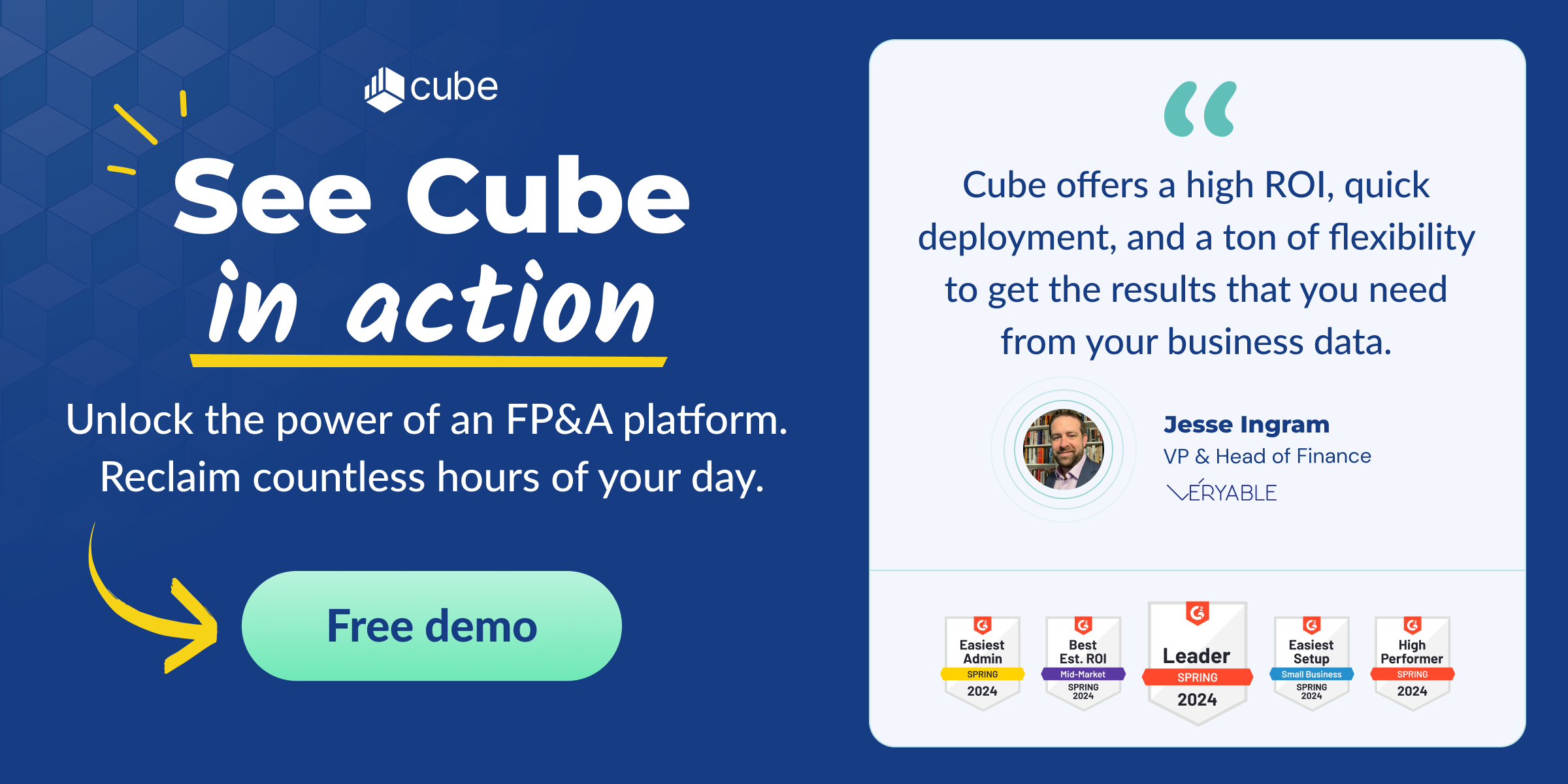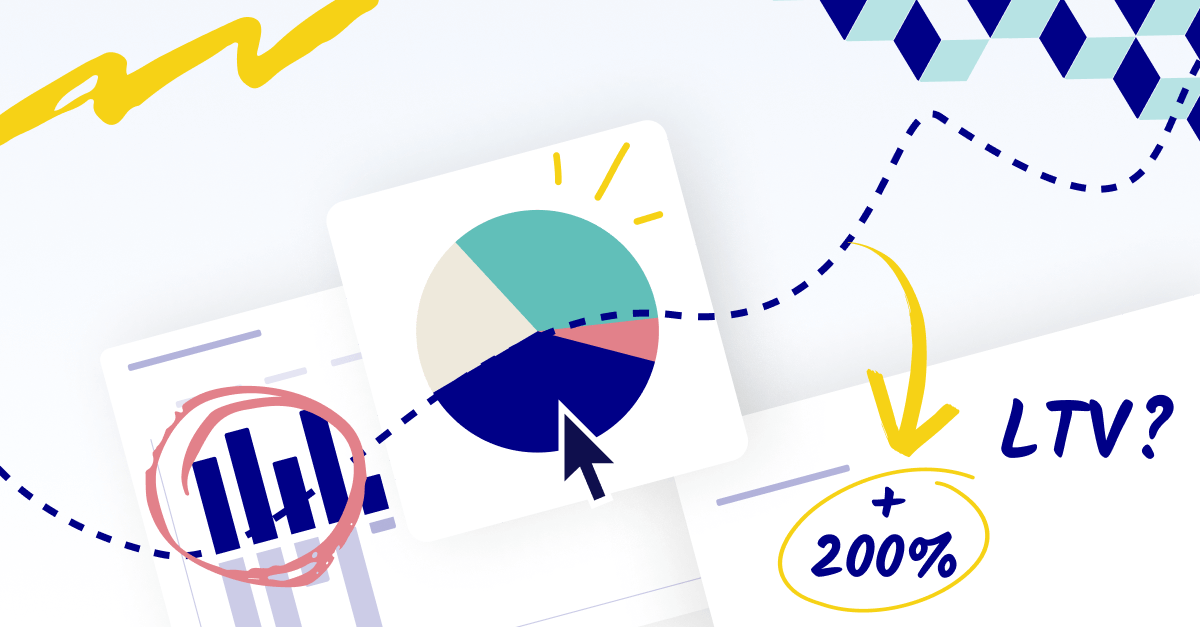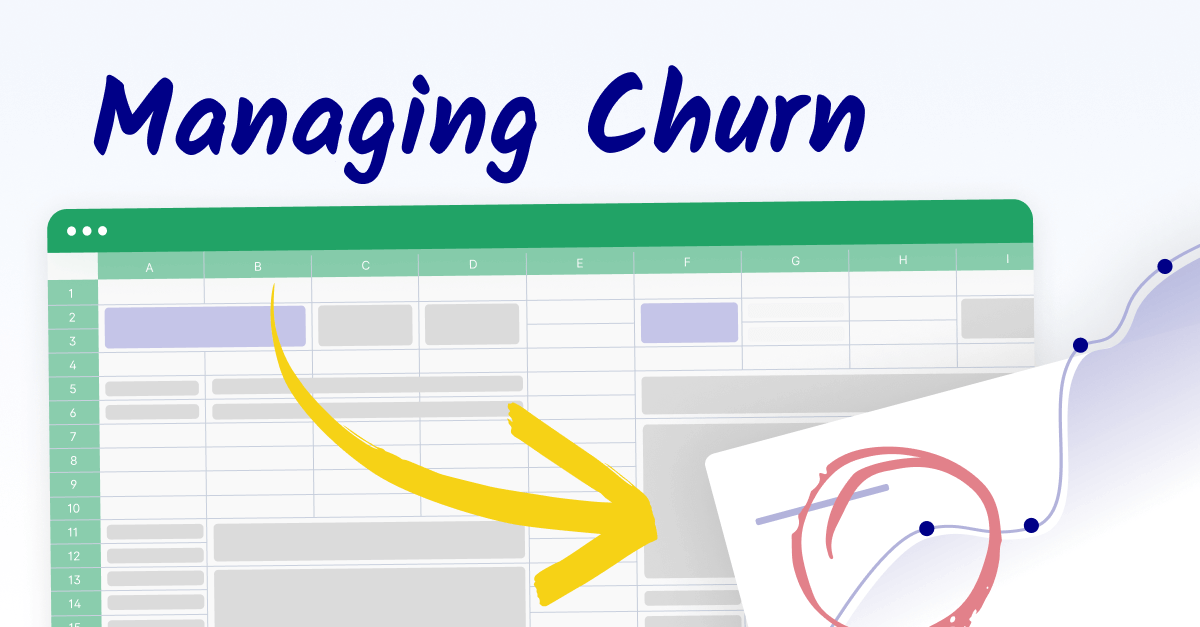Finance in SaaS: Why is it important?
SaaS companies face some special cash flow challenges, particularly those trying to foster sustainable growth while managing existing customers on a subscription model. Managing your cash flow is crucial. It’s all about A) timing your expenses right so you’re not caught short, and B) being able to plan ahead for company growth. Staying solvent and able to fund growth relies on getting this balance right.
Cash flow isn’t the only important metric, though. There are several SaaS KPIs that can tell you what’s really going on with your business. Metrics like customer acquisition costs and churn rates aren’t just numbers for your sales and customer success teams; they’re insights into customer behavior that help you forecast and give you insight into the health of your business. They help FP&A leaders not just see how things are going now but also forecast future success and steer the company wisely.
When a company isn’t closely tracking SaaS KPIs, things can quickly go south with their business model. Misreading churn can make you too comfortable with projected growth, while spending too much trying to win new customers can leave you with too little cash and not enough results. Getting cash flow calculations wrong can leave you in a crunch when your company is ready to invest, and out-of-sync pricing strategies can undercut your competitiveness in the market. Plus, ignoring market shifts means you might miss out when it’s time to pivot and leave your company moving in the wrong direction.
So how do we find innovative and sustainable growth at scale? By paying attention to the signals that come from the data our teams are gathering every day.

Critical KPIs for FP&A leaders in SaaS
With so many metrics to track, it can be tough for businesses to figure out which ones really matter. So, which SaaS metrics should FP&A leaders prioritize to manage their finances most effectively?
Revenue metrics
Monthly Recurring Revenue (MRR) and Annual Recurring Revenue (ARR)
Let's talk about money first. Monthly Recurring Revenue (MRR) and Annual Recurring Revenue (ARR) are your go-to SaaS KPIs to get a feel for your financial stability and growth. They're the steady and predictable pulse of your revenue stream, allowing you to measure continuous financial inflows against the backdrop of operational costs.
Growth in MRR
Then there’s Growth in MRR, which isn’t just about how much you’re making but how fast you're scaling. This figure is important for SaaS companies to use for forecasting and planning for investments ahead, whether that’s hiring new talent or gearing up for expansion. Watching this metric climb can be a strong indicator of a successful business model and market fit.
Customer metrics
Customer Acquisition Cost (CAC)
On to the customer side of things. Customer Acquisition Cost (CAC) helps you figure out if your sales and marketing efforts are actually worth it. Are you spending a fortune to bring in new customers, or are you coming out ahead? The CAC metric provides a clear measure of efficiency in your marketing strategies and can help you recommend strategic adjustments in approaching how your organization acquires customers.
Customer Lifetieme Value (LTV)
Another important customer SaaS metric is Customer Lifetime Value (LTV), which tells you how much revenue a customer will likely bring in over their time with you. This metric gives insight into the bigger financial picture as your customer base grows. LTV helps you understand the long-term value generated by each customer, shaping how you invest in keeping them.
LTV to CAC Ratio
When you put these two SaaS metrics together and track the LTV to CAC Ratio, you can find that sweet spot between what you spend to get customers and what they are worth. A healthy ratio indicates that you're not just growing, but growing wisely, earning more from customers than you spend to acquire them.
Profitability and efficiency metrics
Gross Margin and EBITDA
Now that you know more about your customers, you’ll want to determine how efficiently you are turning resources into profits. Gross Margin and EBITDA are standard key performance indicators that will show you just how profitable your operations are, highlighting the effectiveness of your operational management and cost control.
Customer Churn and Revenue Churn Rates
Other profitability and efficiency metrics are Customer Churn and Revenue Churn Rates—these are crucial because they show how well you’re retaining customers and can help forecast long-term financial outlooks.
Losing customers too fast? That’s a red flag. These metrics are vital for spotting potential problems before they escalate, ensuring strategies are adjusted promptly to boost customer retention.
Customer Engagement Score
Lastly, the Customer Engagement Score can help you predict future behavior—engaged customers typically stick around longer and can become champions of your product. This metric acts as an early indicator of customer satisfaction and potential upsell opportunities, helping your SaaS company fine-tune your customer success initiatives.
Cash flow and operations metrics
Cash Burn Rate
When looking at cash flow and operations, the Cash Burn Rate is all about understanding how fast you’re using up your cash reserves before more money comes in. Knowing how long you can keep running at your current pace is essential for maintaining operations without additional financing.
The Rule of 40
The Rule of 40 is a handy benchmark, calculated by adding a company’s revenue growth rate to its profit margin, it helps you balance growth with profitability, which is crucial for sustainable success in SaaS. This rule is a quick snapshot that can let you know if your SaaS business model is balancing growth and profitability in a way that promotes sustainable business health. It ultimately can help you make strategic decisions about how viable your current business model is.
Days Sales Outstanding (DSO)
Another SaaS KPI, Days Sales Outstanding (DSO), is about getting your cash flow right by managing how quickly you turn sales into cash in the bank. Efficient management of DSO can significantly impact your company's liquidity, reducing the gap between expenditure for operations and incoming revenue.

Best practices for leveraging SaaS KPIs in FP&A
Getting the most out of your SaaS KPIs isn't simply about tracking them—it's about making them work for you. You can ensure your KPIs are useful by making them an integral part of your processes.
1. Analyze trends over time
First, it’s important to analyze trends over time, not just evaluate standalone numbers. This way, you can get a sense of the bigger picture, see how things are changing, and better predict what might come next. By mapping out trends, you also can spot cycles and seasonality that could influence your strategic decisions.
2. Don't look at SaaS KPIs in isolation
Also, don’t just look at SaaS metrics in isolation. Try correlating different metrics to get a fuller view of what’s happening. For example, comparing customer acquisition costs with lifetime value can tell you a lot about your profitability but seeing how these numbers play against each other can help you adjust your strategies to optimize spending and maximize average revenue.
3. Keep it simple
When it comes to reporting, keep it simple to ensure everyone has the information they need to make strategic decisions. Use clear, straightforward language and a well-structured layout so that everyone from stakeholders to team members can easily grasp the insights and take action. Simplifying complex data into actionable intelligence is a skill that can greatly enhance the effectiveness of your communication.
4. Implement dashboards
Consider implementing dashboards or using data visualizations for reporting to make complex data more digestible and engaging. It’s about making the numbers pop off the page and really tell their story. A well-designed chart or graph can sometimes communicate what pages of numbers cannot.
5. Align KPIs with business goals
Make sure the SaaS KPIs you track align closely with your business goals. This helps ensure that the efforts you're putting into monitoring and analysis are directly contributing to your company’s strategic objectives. Aligning KPIs with business goals ensures that every team member understands what success looks like and how their actions help achieve it.
6. Keep KPI targets realistic
And remember, setting targets isn’t a one-and-done deal. Establish realistic KPI targets, keep an eye on them, but don’t shy away from adjusting them as your market and business evolve. Markets change, new competitors emerge, and customer preferences shift—your KPIs need to reflect these changes to remain relevant. Regularly reviewing and revising your targets ensures they remain ambitious yet achievable, will help your team stay motivated and focused.
7. Engage your team with these KPIs
Create a culture where SaaS KPIs are not just numbers but narratives that tell where the company is and where it needs to go. Encourage team members to suggest improvements, participate in analyzing trends, and take ownership of their impact on the metrics. This inclusive approach not only enhances engagement but also leads to richer insights and more creative solutions.
By following these best practices, you can turn KPI tracking from a mundane task into a critical element of your strategic management, driving actionable, strategic decisions and more robust business growth.
Conclusion: calling all KPIs
In SaaS businesses, KPIs are crucial tools that FP&A leaders can use to steer their companies toward success. Taking a proactive and informed approach to managing these metrics can dramatically enhance decision-making and business performance. Be sure to keep these practices in mind to make the most of your data and stay ahead of the curve.
Interested in learning how Cube can help you with reporting and forecasting on the SaaS KPIs that matter most to your business? Connect with us to schedule a demo.



.png)









.png)

.png)





